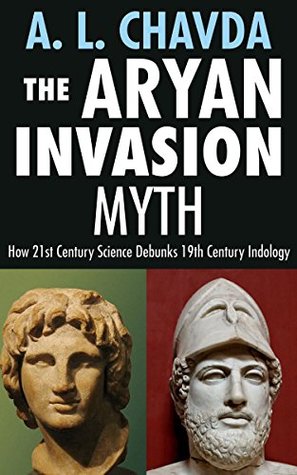The Aryan Invasion Myth: How 21st Century Science Debunks 19th Century Indology by A.L. Chavda - Review by Abhishek Desikan
The Aryan Invasion Myth is a short read on the present state of the long-standing debate on the origins of the Indian people. To the uninitiated, there are broadly two schools of thought concerning the origins of early Indians - The Aryan Invasion Theory(AIT)/Aryan Migration Theory(AMT) and the Out of India Theory (OIT).
The AIT claims that there was an original Dravidian populace (Harappan civilization) native to India. These tribes were driven southwards by invading/migrating “Aryans” from the West (Steppes) around 1500 BCE who established the Vedic society and “brought” language(Sanskrit), culture, and religion (Hinduism) to India.
The OIT theorizes the opposite. It claims that early Indians were native to India. The Harappan civilization and the Vedic civilizations are one and the same. And, the migration of people and language happened from east to west instead.
A.L Chavda, a theoretical physicist, debunks AIT/AMT in this book by citing the latest research and data in archeology and genetics and their results. The data indicates a continuing civilization from the 6th millennium BCE (site Bhirranna on the now-defunct Saraswati River). The Sarasvati River is mentioned as a mighty river in the Rig Veda, which confirms it was composed close to 5000 BCE and not during the supposed Aryan migration much later. He also expanded on the origin of the R1a haplogroup in India from a single male ancestor 15000 years ago. These and a mountain of other evidence and research papers clearly demonstrate that the AIT as a theory holds no ground.
In the postscript, he laments on the leftist narrative in academia in India and how it is important to assert our position in India and globally. He also mentions the need to invest money and infrastructure in genetic research, which is lacking in India today.

Originally published here.